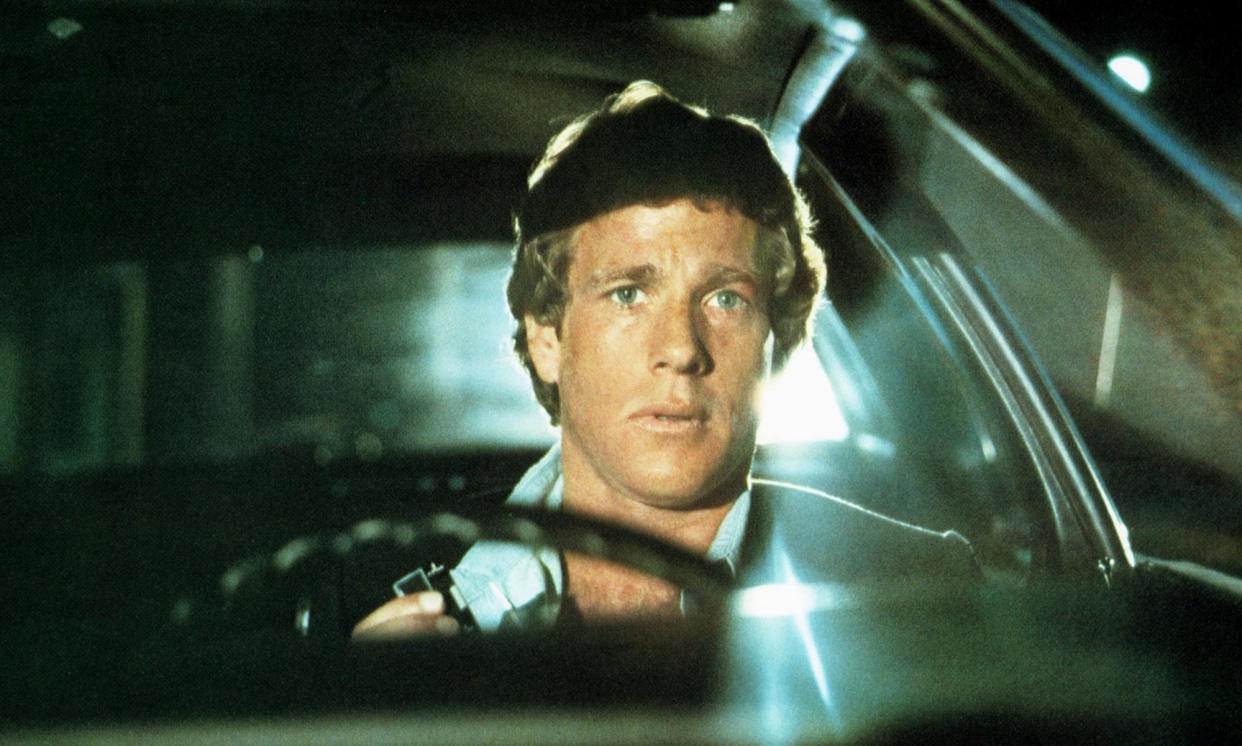Ryan O’Neal was a captivating and absurdly handsome movie star

There were plenty of handsome leading men in the Hollywood of the early 70s: Warren Beatty, Robert Redford, Kurt Russell, Burt Reynolds … but none of them were as purely and fascinatingly pretty as Ryan O’Neal, none with that cherubic pertness, complicated with a kind of wounded vulnerability: a pout, a frown, a beguiling flash of femininity to go with the dreamboat male-lead looks, which went hand-in-hand also with something worldly and hard-edged.
Related: Ryan O’Neal, Hollywood actor and star of Love Story, dies aged 82
It is a great moment in 1973’s The Thief Who Came To Dinner when Ryan O’Neal’s jewel thief coolly inveigles himself into a fancy society soiree and Jacqueline Bisset is taken aback and perhaps even jealous of that brazen, faintly androgynous O’Neal beauty that almost matches her own. “You’re too pretty to be any good,” she says tauntingly. “Any good at what?” he deadpans. “What else is there?” she replies. What indeed?
O’Neal had made the entirety of American womanhood fall devastatingly in love with him with his breakthrough performance in Arthur Hiller’s Love Story in 1970, the heart wrenching date-movie weepie, in which he was the entitled Harvard rich kid falling for the smart, tough girl from the wrong side of the tracks: played by the formidable Ali MacGraw, who is to become terminally ill. Their romantic dynamic had something to do with her being stronger and more assertive than O’Neal’s character, who had been so browbeaten by his wealthy father – but he achieves a kind of nobility and hard won maturity through her sacrifice for him. (At the end of the decade, O’Neal starred in the somewhat anticlimactic sequel Oliver’s Story in which he finds love, of a sort, with Candice Bergen.)
In a sense, O’Neal’s stardom-sponsor at that stage was Robert Evans, the head of Paramount Pictures which produced Love Story – and who was at the time married to Ali MacGraw. But the film-maker who really put O’Neal on the map was the brilliant young director Peter Bogdanovich who cast him in two of his greatest pictures and found in O’Neal exactly the right qualities of insouciant suavity, comedy and romantic adventure.
In his 1972 screwball homage What’s Up Doc?, O’Neal was the prissy academic musicologist, wearing pompous glasses like Cary Grant in Monkey Business (which naturally served only to accentuate his almost cartoony prettiness). His character has adorably cerebral theories about early man’s capacity to appreciate harmony. In a madcap plot about a mixup concerning four identical bags, O’Neal finds himself romantically mesmerised by the alpha-dominant Barbara Streisand.
But his most sensational movie was the one a year later – the glorious Depression-era grifter comedy Paper Moon in which O’Neal is a conman who travels the midwest pulling scams with a little nine-year-old accomplice who pretends to be (and might really be) his angel-faced little daughter: played of course by O’Neal’s actual daughter: Tatum O’Neal.
It was a piercingly sad and funny pairing. Tatum is old beyond her years (it is still shocking to see her smoke a cigarette) and Ryan, for all his character’s predatory cynicism, looks boyish. As ever, O’Neal projected a kind of delicacy and prettiness in his looks and was perhaps essentially submissive to a female lead. Bogdanovich later found in his leading man the same comic openness in his Hollywood comedy Nickelodeon.
Yet two more great 70s films were to put O’Neal into the movie pantheon of that decade: he grew up, just a little, to play the lead for Stanley Kubrick in his period drama Barry Lyndon, based on Thackeray’s novel about the roguish adventurer who comes to grief – his pulchritudinous looks were now part of the story. He was weak, venal, passive and his gorgeousness is convulsed with pain.
In Walter Hill’s The Driver in 1978, that butter-wouldn’t-melt face was deliberately impassive and opaque: he is the deadpan, imperturbable getaway driver whose almost childlike expression of calm is clouded only by his contempt for those who are not as professional as he is.
Maybe O’Neal never quite found a way of maturing or evolving, like a Newman or an Eastwood, but in his prime he had glorious charisma and sexiness and a distinctively and disarmingly comic sense of how absurdly handsome he was, and the fear and loneliness that beauty can bring.

 Yahoo Movies
Yahoo Movies 
